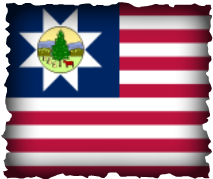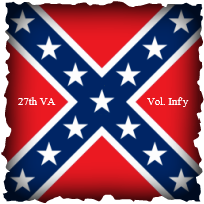The American Civil War
The Civil War was the deadliest war in American history, causing 620,000 Soldier/Sailor deaths, from both US/CS sides (as well as numerous foreign recruited individuals). In April 1861, 11 Southern slave states declared their secession from the U.S. and formed the Confederate States -CS (the Confederacy). They fought against the U.S. Federal Government (the Union), who consisted of 19 free Northern states as well as 5 border slave states. This tragic and divisive war lasted 4 years, ending in April 1865.
Canadians in the Civil War
It is a lesser known fact that this conflict greatly affected Canadian politics and economics. Also, that approximately 40,000 Canadian & Quebec men joined to fight in the US/CS conflict, even though they technically broke British & Canadian laws by joining a foreign army. At least 85% joined the Northern Union Army & Navy and approximately 15% fought in the Southern Confederate Army & Navy. 5 Canadians became Union Generals., and at least 28 Canadians won the “Congressional Medal of Honor” while serving in the Union Army.
Although politically “neutral”, Britain, France and Canada were quite sympathetic to the Southern cause of succession, but not to slavery. These countries needed the raw cotton to keep their textile mills working. As a result, during this war, relations between Britain/Canada and the Northern States were highly endangered because it was feared that the North could retaliate against Britain by invading Canada. Wisely, President Lincoln chose not to risk having a war on 2 fronts, so his government did not sustain many threatening moves other than the occasional “political posturing”. Thus the “possible” threat of an invasion by the United States was a key factor in pushing Canadian politicians towards a Pro-Confederation movement, which in July 1, 1867, resulted of the creation of a new country, separate from Britain, which was initially called the “Confederation” of Canada, but later became better known as the “Dominion” of Canada.
Although politically “neutral”, Britain, France and Canada were quite sympathetic to the Southern cause of succession, but not to slavery. These countries needed the raw cotton to keep their textile mills working. As a result, during this war, relations between Britain/Canada and the Northern States were highly endangered because it was feared that the North could retaliate against Britain by invading Canada. Wisely, President Lincoln chose not to risk having a war on 2 fronts, so his government did not sustain many threatening moves other than the occasional “political posturing”. Thus the “possible” threat of an invasion by the United States was a key factor in pushing Canadian politicians towards a Pro-Confederation movement, which in July 1, 1867, resulted of the creation of a new country, separate from Britain, which was initially called the “Confederation” of Canada, but later became better known as the “Dominion” of Canada.
Reenacting Endeavours
The GBMs portray two different units from the Civil War: One Union, and one Confederate.
4th Vermont Volunteers, United States of America (Company K)

The GBMs also portray the 4th Vermont Volunteer Infantry Regiment, which were part of the VI Corps of the Army of the Potomac.
This unit saw action throughout the war and served with great distinction, where two member of the same Company (Co. K) who were born in CANADA received the Congressional Medal of Honor.
This unit saw action throughout the war and served with great distinction, where two member of the same Company (Co. K) who were born in CANADA received the Congressional Medal of Honor.
27th Virginia Volunteer Inf., Confederate States of America (Company M*)

Historical Regimental Flag
The 27th Virginia Volunteer Infantry Regiment of the Army of Northern Virginia, which was part of the famous "Stonewall" Brigade, is one of the units we portray. This unit fought and gained fame as the "Bloody 27th" during the Civil War.
Battle honors included: 1st Manassas, Romney, 1862 Valley Campaign, Seven Days, Cedar Mountain, Groveton, 2nd Manassas, Harper's Ferry, Sharpsburg, Kearneyville, Fredericksburg, Chancellorsville, 1st Winchester, Gettysburg, Mine Run, Morton's Ford, Wilderness, Spotsylvania, North Anna, Behtesda Church, Cold Harbor, Lynchburg Campaign, Monocacy, 2nd Kernstown, 2nd Winchester, Newton, Sheperdstown, 3rd Winchester, Fisher's Hill, Cedar Creek, Petersburg, Hatcher's Run, Fort Stedman, Saylor's Creek, and lastly at Appomattox - where one officer and 20 soldiers of the 27th finally surrendered in April 1865 at the end of hostilities between the two warring factions.
Battle honors included: 1st Manassas, Romney, 1862 Valley Campaign, Seven Days, Cedar Mountain, Groveton, 2nd Manassas, Harper's Ferry, Sharpsburg, Kearneyville, Fredericksburg, Chancellorsville, 1st Winchester, Gettysburg, Mine Run, Morton's Ford, Wilderness, Spotsylvania, North Anna, Behtesda Church, Cold Harbor, Lynchburg Campaign, Monocacy, 2nd Kernstown, 2nd Winchester, Newton, Sheperdstown, 3rd Winchester, Fisher's Hill, Cedar Creek, Petersburg, Hatcher's Run, Fort Stedman, Saylor's Creek, and lastly at Appomattox - where one officer and 20 soldiers of the 27th finally surrendered in April 1865 at the end of hostilities between the two warring factions.
